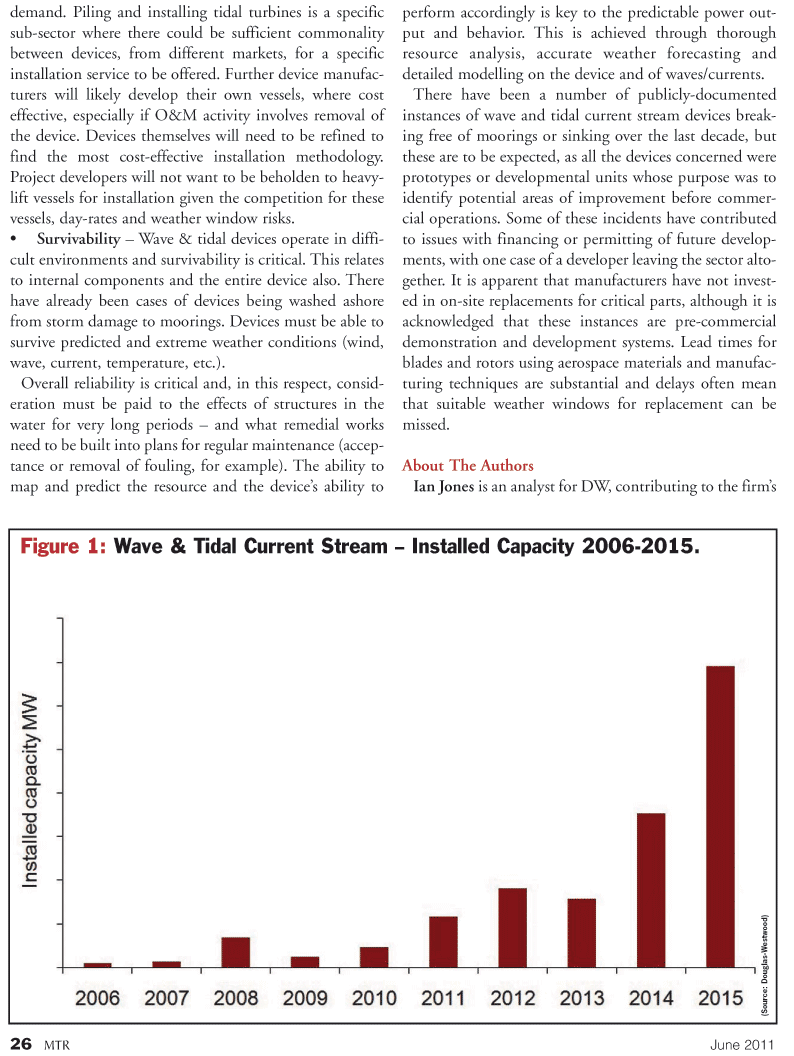
Page 26: of Marine Technology Magazine (June 2011)
Hydrographic Survey
Read this page in Pdf, Flash or Html5 edition of June 2011 Marine Technology Magazine
26 MTR June 2011 demand. Piling and installing tidal turbines is a specific sub-sector where there could be sufficient commonality between devices, from different markets, for a specific installation service to be offered. Further device manufac- turers will likely develop their own vessels, where cost effective, especially if O&M activity involves removal of the device. Devices themselves will need to be refined to find the most cost-effective installation methodology.
Project developers will not want to be beholden to heavy- lift vessels for installation given the competition for these vessels, day-rates and weather window risks. • Survivability – Wave & tidal devices operate in diffi- cult environments and survivability is critical. This relates to internal components and the entire device also. There have already been cases of devices being washed ashore from storm damage to moorings. Devices must be able to survive predicted and extreme weather conditions (wind, wave, current, temperature, etc.).
Overall reliability is critical and, in this respect, consid- eration must be paid to the effects of structures in the water for very long periods – and what remedial works need to be built into plans for regular maintenance (accep- tance or removal of fouling, for example). The ability to map and predict the resource and the device’s ability to perform accordingly is key to the predictable power out- put and behavior. This is achieved through thorough resource analysis, accurate weather forecasting and detailed modelling on the device and of waves/currents.
There have been a number of publicly-documented instances of wave and tidal current stream devices break- ing free of moorings or sinking over the last decade, but these are to be expected, as all the devices concerned were prototypes or developmental units whose purpose was to identify potential areas of improvement before commer- cial operations. Some of these incidents have contributed to issues with financing or permitting of future develop- ments, with one case of a developer leaving the sector alto- gether. It is apparent that manufacturers have not invest- ed in on-site replacements for critical parts, although it is acknowledged that these instances are pre-commercial demonstration and development systems. Lead times for blades and rotors using aerospace materials and manufac- turing techniques are substantial and delays often mean that suitable weather windows for replacement can be missed.
About The Authors
Ian Jones is an analyst for DW, contributing to the firm’s
Figure 1: Wave & Tidal Current Stream – Installed Capacity 2006-2015. (Sour ce: Douglas-W estwood)

 25
25

 27
27
